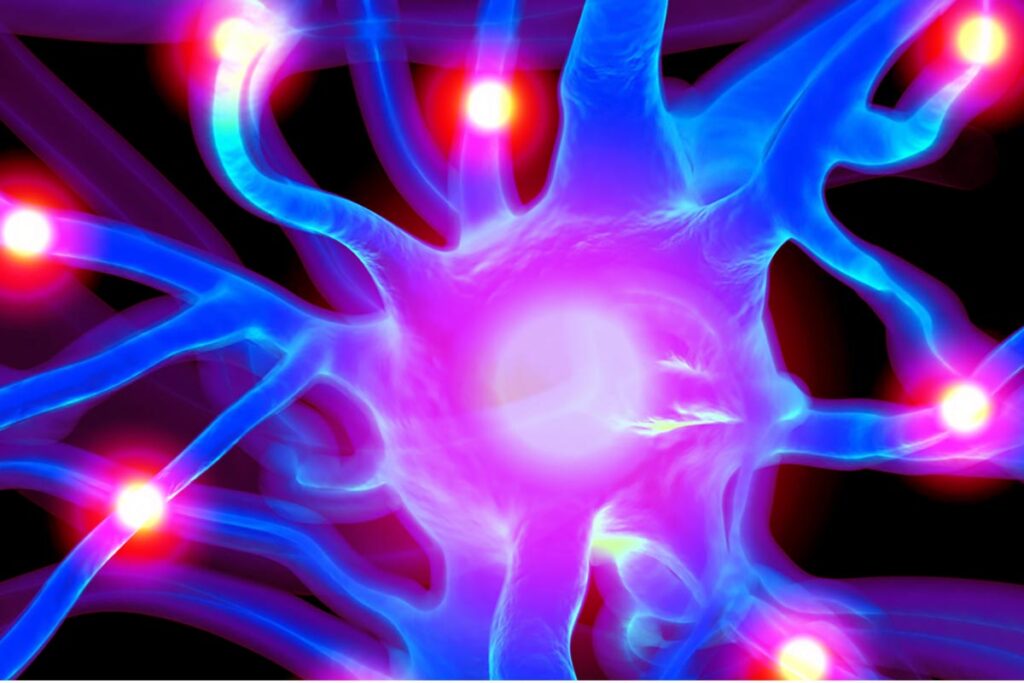We Accept Most Insurance. Please Call to Verify Yours.






![]()







Transcranial Magnetic Stimulation or TMS is a mental health treatment that’s rapidly becoming popular across the United States. The treatment was first approved by the FDA for treating depression in 2008. Today, it’s used for a wider range of mental health treatment including anxiety, substance use disorder, and much more.
If you’re looking into TMS treatment, you probably want to know the most important question. Does it work? The short answer is that, yes, TMS has been approved for use in improving mood regulation for mental health treatment. The long answer is that it’s not a magic fix and it won’t replace therapy or other mental health interventions. We’ll go over the details and everything else you need to know about TMS and its efficacy for treating mental health disorders in the article below.
Transcranial Magnetic Stimulation is, in short, the electromagnetic stimulation of the brain. Here, you sit in a chair with a magnetic coil attached to your head. The machine then sends targeted pulses of magnetic energy through the brain, typically over a period of about 20-25 minutes. Each session is about 30-45 minutes, with 5-15 minutes to set up and ensure the machine is calibrated properly.
TMS is thought to activate regions of the brain that decrease neuron activity during depression and anxiety. That, in turn, works to alleviate that depression and has shown positive changes in neurons related to mood and mood regulation.
It’s also thought that magnetic pulses increase blood flow to the brain. They could also improve the plasticity of synapses, which means that you may be able to learn more quickly, which could improve results with other forms of therapy.
What is Electromagnetic Stimulation? – Electromagnetic stimulation is exactly what it sounds like. You create an electromagnetic force with electricity and a coil. This is exactly the same process as is used for MRI devices. Or as is used for creating magnetic cranes to pick up cars or shipping containers. It’s just done at close enough proximity to your head and with connections on either side of the head so that the electromagnetic energy passes through your skull and into your brain.
Transcranial Magnetic Stimulation has been approved by the FDA for 15 years for treating depression. It’s been approved for treating anxiety for 10 years. It’s also in trials for treating other types of mental health disorder including panic disorder and substance use disorders.
However, most of the studies looking into the efficacy of TMS are based on depression and anxiety. This means that there’s a good body of evidence showing that transcranial magnetic stimulation can provide remission and improvement for people suffering from depression and anxiety. However, there is no formal evidence for using TMS to treat other mental health disorders. That’s still underway and may take several years to be published.
Some of those studies include one showing that people taking TMS show improvement as much as four times higher than persons taking a placebo treatment. Over a 4–6-week treatment period, patients show as much as a 40% remission rate – although that requires maintenance after about 4-5 years.
In fact, most TMS studies show that transcranial magnetic stimulation results last for at least a year. Afterwards, you may require maintenance sessions, depending on your situation. Combining TMS with cognitive behavioral therapy is also a good idea.

TMS is proven to show results in patients with anxiety and depression. However, it doesn’t work for everyone. In fact, it’s also not safe for everyone. This means you’ll have to be screened before you’re allowed to opt into transcranial magnetic stimulation therapy.

Transcranial magnetic stimulation should last for at least a year. However, it may last longer. In most cases, your doctor will talk to you about next steps, what you can do to maintain treatment, and when to follow up. Often, you’ll be asked to follow cognitive behavioral therapy and other treatments to help maintain the results.
Here it’s important to keep in mind that TMS is not a cure. It can help you to improve emotional regulation and management. It can also help you to improve results with your existing mental health treatment such as behavioral therapy – which can also add a lot of value. In most cases, you will have to eventually follow up for more treatment after 1-5 years, or when you start to go into remission.
If you or a loved one is struggling with a mental health disorder, you may be able to talk to your doctor about TMS. In most cases, you’ll only get a prescription for TMS if you’ve already tried other forms of treatment. You’ll also have to pass a health check to ensure you’re not at risk of complications. Otherwise, transcranial magnetic stimulation can be a good addition to your mental health treatment. That’s especially true if you’re struggling with depression or anxiety, as TMS is well-tested and proven to be effective in helping to treat these disorders.
As an FDA-approved treatment, TMS is effective, your insurance should pay for it, and you can get a doctor’s prescription. If you’d like to know more, reach out to the specialists at Stairway Resources Center at 888-450-2557 for a consultation. We’ll talk with you and work out the best course of action and treatment for your long-term health and get you started with a plan that works for you.